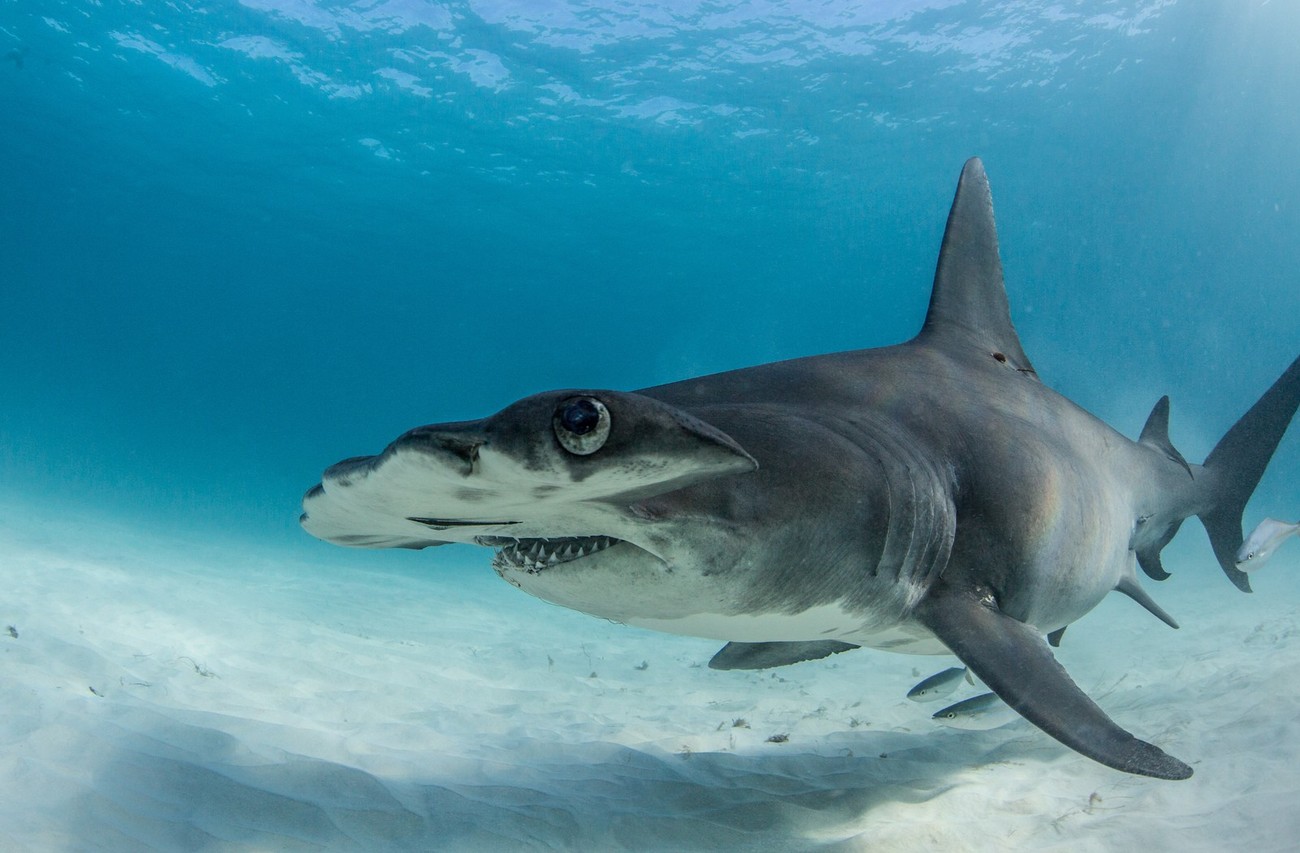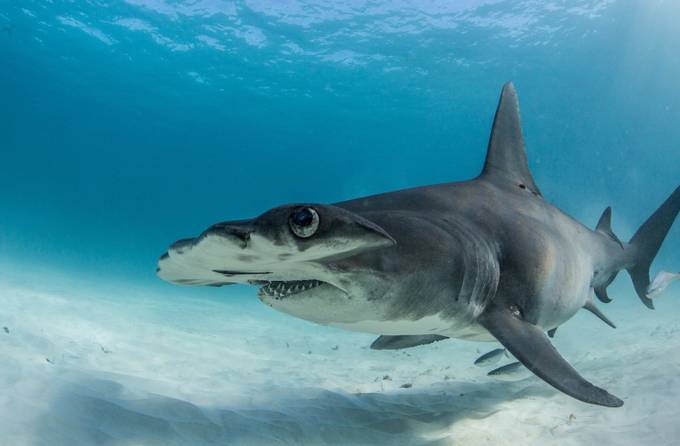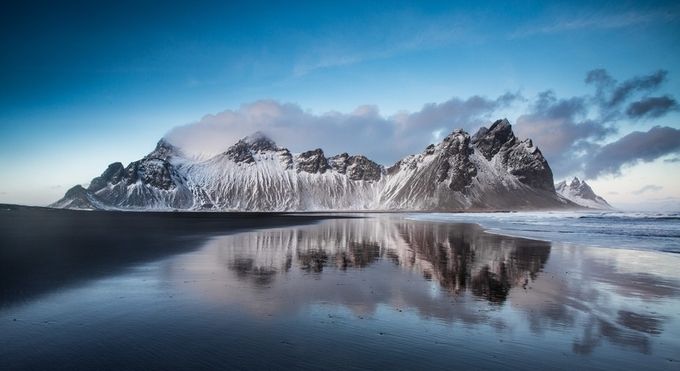Here is something we can learn from MattMcGee about the techniques and story behind this awarded photo that won People's Choice in The Animal Eye Photo Contest.
1. MattMcGee, where did you take this photo?
This photo was taken off Bimini Island in the Bahamas. Great hammerhead sharks are usually solitary animals, but they congregate around Bimini in winter and early spring, and I believe it's the only place in the world that this species of hammerhead comes together like this.
2. What time of day?
The sharks don't seem to be active until after noon, so this image was taken at about 3:00 in the afternoon. You basically take the boat to the areas where the sharks are frequently seen, drop the anchor, and wait. And wait. Fortunately the water is crystal clear, so when sharks approach, you can see a big dark shape in the water, and that's when you put your gear on and get in.
3. Anything worth sharing about lighting?
The lighting is VERY tricky in this shot. It's challenging because the sand is very fine, so you have to take great care not to stir it up, because if you do, all those fine grains will show up as backscatter in your photos. Even if you are still and don't brush up the sand, the sharks will. Additionally, the sand is very white, and can act like a reflector. It can be very easy to get the white underside of the shark blown out if you aren't careful. The best technique is to position you strobes out wide from the camera, point them out and up, and use diffusers.
4. What equipment did you use?
I shot this with a Canon 5d mark 3, with a Sigma 15mm fisheye. The camera and lens were in an Ikelite underwater housing, and I used 2 strobes connected to the camera hotshot with a sync cable. This was at about 20 feet in depth, and I was on scuba the whole time.
5. What inspired you to take this photo?
I've always been fascinated by sharks. When I first got scuba certification, I couldn't decide if I was afraid that I would see a shark, or excited to see one. Hammerheads are such a unique looking species, and the great hammerhead is the largest of them all. I wanted to see these magnificent sharks firsthand, but they are solitary and hard to find in the wild. When I heard that they were seen around Bimini frequently in the winter and early spring, I had to go. That dorsal fin that is so disproportionally tall is so distinctive on this shark, and I think makes for an amazing image.
6. Did you do any post-processing?
I try to get everything correct in camera, and try to not do a lot of post processing, but I removed some sand backscatter, and desaturated the image. Otherwise, that's pretty much what I got.
7. What equipment do you normally have in your bag?
I guess what's in my bag depends on what I'm shooting. When you are shooting underwater, you pretty much have to decide if you are going to shoot macro or wide angle. For wider angle, like this shot, I take the 17-40 4L, and 15 mm fisheye. For macro I usually shoot the 100mm 2.8L, but sometimes use the 50mm macro. I also like to use a snoot a lot on my strobe for lighting macro. It's a cool effect, but lately everyone is doing it.
8. Any advice for others trying to capture something similar?
If you want to photograph sharks, I usually start with the species I want to photograph, and then start trying to find out where they live. After that, it's a matter of finding a dive operator who can get you up close and personal with the sharks. The Bahamas has lots of sharks. You can see multiple species on one dive, so it's a great place to start. Cocos Island in Costa Rica, and the Galapagos have lots of sharks, but they are remote and hard to get to, but if you can handle the journey out there, it's pretty special. South Africa also has lots of different species of sharks, including some rare ones like 6 gill and 7 gill sharks. Fiji is another location with sharks, but it also has some nice macro stuff so it's a nice combination destination.
Photographing sharks is a little difficult sometimes. You don't really need to be spending a lot of time looking at your LCD screen, because you need to be aware of your surroundings. I've never had any problems with aggressive sharks, but if you don't follow protocol, you could arouse their interest and they might want to check you out a little closer. Species like tiger sharks can be a little curious and come close to see what you are. I found that if you just stand your ground and give them a slight push, they will get the idea that you don't want them in your space. The great hammerheads like in this photo, are slow to get comfortable, but once they don't see you as a threat, they come very close and you will often get bumped, especially by their tail. Obviously wide angle lenses are required for these shots. Position your strobes out wide, and get down low. And have fun!!!





